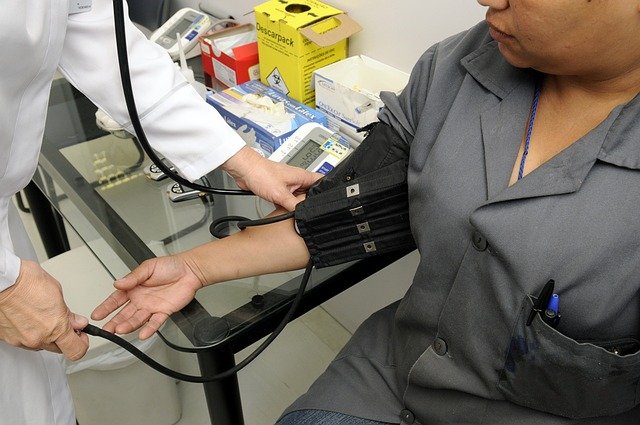A Complete Guide to Understanding Congenital Adrenal Hyperplasia (CAH) in Females
Congenital Adrenal Hyperplasia (CAH) is a group of inherited genetic disorders affecting the adrenal glands, which sit atop the kidneys and produce essential hormones. In females, CAH can significantly impact development, fertility, and overall health throughout life. This condition occurs when the body lacks specific enzymes needed to produce cortisol and sometimes aldosterone, leading to an overproduction of androgens (male hormones). Understanding CAH is crucial for affected individuals and their families, as early diagnosis and proper management can dramatically improve quality of life and long-term health outcomes.

What is Congenital Adrenal Hyperplasia (CAH)?
Congenital Adrenal Hyperplasia represents a collection of autosomal recessive disorders that disrupt normal hormone production in the adrenal cortex. The most common form, accounting for approximately 90-95% of cases, results from a deficiency in the enzyme 21-hydroxylase. This deficiency prevents the normal conversion of precursor molecules into cortisol and aldosterone, causing these precursors to be redirected toward androgen production.
The condition exists on a spectrum of severity, ranging from mild forms that may not be diagnosed until adulthood to severe, life-threatening presentations that require immediate medical intervention. The prevalence varies globally, with rates typically ranging from 1 in 10,000 to 1 in 15,000 births, though certain populations show higher frequencies due to genetic founder effects.
Types and Symptoms in Females
CAH manifests in several distinct forms, each with unique characteristics and symptom patterns in females. Classic CAH includes both salt-wasting and simple virilising forms, while non-classic CAH presents with milder symptoms that often emerge later in life.
In classic salt-wasting CAH, the most severe form, females typically present with ambiguous genitalia at birth due to excess androgen exposure during fetal development. These infants may experience life-threatening salt-wasting crises in the first few weeks of life, characterised by dehydration, low blood pressure, and electrolyte imbalances. Simple virilising CAH also causes genital ambiguity but without the salt-wasting component.
Non-classic CAH often goes undiagnosed until adolescence or adulthood, when symptoms such as irregular menstrual periods, excessive hair growth (hirsutism), severe acne, and fertility issues become apparent. Some females may experience premature pubic hair development or rapid growth spurts during childhood.
Diagnosis and Screening Costs
Early diagnosis of CAH relies primarily on newborn screening programmes, which test for elevated levels of 17-hydroxyprogesterone in dried blood spots collected within the first few days of life. In New Zealand, this screening is part of the standard newborn screening panel and is provided at no cost to families through the public healthcare system.
For suspected cases or non-classic forms diagnosed later in life, additional testing may include detailed hormone panels, genetic testing, and imaging studies. These diagnostic procedures can vary in cost depending on whether they’re conducted through public or private healthcare services.
| Test Type | Public System Cost | Private System Cost | Timeframe |
|---|---|---|---|
| Newborn Screening | Free | Free | 2-3 days |
| Hormone Panel | Subsidised | $200-400 | 1-2 weeks |
| Genetic Testing | Subsidised | $800-1500 | 2-4 weeks |
| Specialist Consultation | Free with referral | $250-400 | 2-6 weeks |
Prices, rates, or cost estimates mentioned in this article are based on the latest available information but may change over time. Independent research is advised before making financial decisions.
Treatment Options and Costs
Treatment for CAH focuses on hormone replacement therapy to address cortisol and aldosterone deficiencies while minimising excess androgen production. The primary approach involves daily oral medications that replace the missing hormones, allowing for normal growth, development, and metabolic function.
In New Zealand’s public healthcare system, essential treatments are typically funded through PHARMAC, making them accessible to patients at minimal cost. However, some newer formulations or specialised preparations may require private funding or special approval processes.
Females with CAH may also require surgical intervention to address genital differences, with timing and approach carefully considered based on individual circumstances and current medical guidelines. These procedures are generally covered under the public system when deemed medically necessary.
Regular monitoring includes frequent blood tests, growth assessments, bone density scans, and specialist consultations to optimise treatment and prevent complications. The lifetime cost of comprehensive CAH management can be substantial, but New Zealand’s healthcare system provides significant support for chronic condition management.
Living with CAH: Long-Term Care and Outlook
Long-term management of CAH requires a multidisciplinary approach involving endocrinologists, surgeons, psychologists, and other specialists as needed. Females with CAH can expect to lead full, productive lives with proper medical care and support.
Fertility considerations are important for many women with CAH, as the condition can affect menstrual cycles and ovulation. With appropriate treatment adjustments and specialist care, many women with CAH can conceive and carry pregnancies successfully, though close monitoring is essential throughout.
Psychological support plays a crucial role in comprehensive care, particularly for individuals dealing with gender identity questions, body image concerns, or the stress of managing a chronic condition. Support groups and counselling services are available through various healthcare providers and patient advocacy organisations.
The long-term outlook for females with CAH has improved significantly with advances in treatment and monitoring. Early diagnosis, consistent medical care, and psychosocial support contribute to optimal outcomes, allowing women with CAH to pursue their educational, career, and family goals with confidence.
Regular health monitoring throughout life remains essential to prevent complications such as adrenal crisis, osteoporosis, cardiovascular issues, and metabolic complications. With proper management, life expectancy for individuals with CAH approaches that of the general population.
This article is for informational purposes only and should not be considered medical advice. Please consult a qualified healthcare professional for personalized guidance and treatment.




